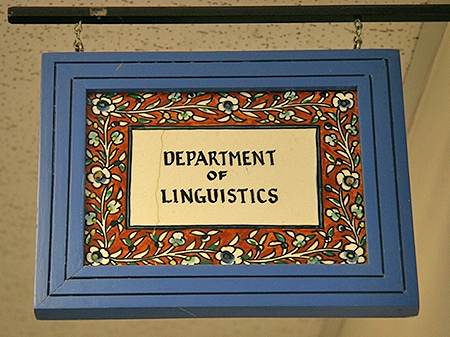
Linguistics ETDs
Publication Date
7-1-2016
Abstract
Second language learners of American Sign Language (ASL) have an unusual preference for translating "forward" into their second language (Nicodemus & Emmorey 2013), in contrast to spoken language bilinguals' preference for translating "backward" into their first language (Seleskovich, 1976). The typical bilingual preference for backward lexical translation is modeled by Kroll and Stewart (1994) who showed that forward translation uses slower conceptual mediation and backward translation uses faster lexical mediation, but this asymmetry alone fails to explain signed language bilinguals' forward preference. Prior attempts to explain these conflicting patterns for signing vs. non-signing bilinguals based on the prevalence of iconicity in signed languages are inconclusive (Bosworth & Emmorey 2010, Thompson et al. 2009, 2010). However, these failed to distinguish between language-external (transparency and imageability) and language-internal (iconicity) motivated form-meaning mappings. This dissertation investigates whether language-external and language-internal motivated mappings between form and meaning differentially impact conceptual and lexical activation during translation. Study 1 revisits translation recognition experiments (Talamas et al. 1999, Sunderman & Kroll, 2006) in which participants judge lexical items from two languages and decide if they are equivalent. Results show incorrect translation distractors that are related in both form and meaning to the correct translation inhibit recognition in both novices and experts; however, they parallel semantic distractors for novices, but phonological distractors for experts. Further, language-external conceptual imageability affects novices and experts in a similar manner for unrelated distractors, but not for iconic distractors. Study 2 investigates the interaction of proficiency, imageability, and iconicity during production in forward and backward translation. While both imageability and iconicity facilitate forward translation for novices, they do not facilitate backward translation. Experts, on the other hand, show no facilitation for either measure in forward translation, but do benefit from iconicity in backward translation. In sum, this dissertation provides evidence that language external motivations facilitate conceptual access for novice learners of signed languages and language internal motivations grow in importance with proficiency. This dynamic explains the unusual preference of spoken/signed bilinguals for forward translation at lower levels of proficiency and provides support for a cognitive usage-based model of the bimodal bilingual lexicon.
Project Sponsors
National Science Foundation Visual Learning Visual Language Science of Learning Center Student Review Committee; University of New Mexico Graduate and Professional Student Association
Language
English
Keywords
bilingualism, iconicity, cognitive linguistics, translation, usage-based, sign language
Document Type
Dissertation
Degree Name
Linguistics
Level of Degree
Doctoral
Department Name
Department of Linguistics
First Committee Member (Chair)
Wilcox, Sherman
Second Committee Member
Wilcox, Phyllis P.
Third Committee Member
Shaffer, Barbara
Fourth Committee Member
Kroll, Judith F.
Recommended Citation
Anible, Benjamin. "Iconicity effects in translation direction: Bimodal bilingual lexical processing." (2016). https://digitalrepository.unm.edu/ling_etds/41
